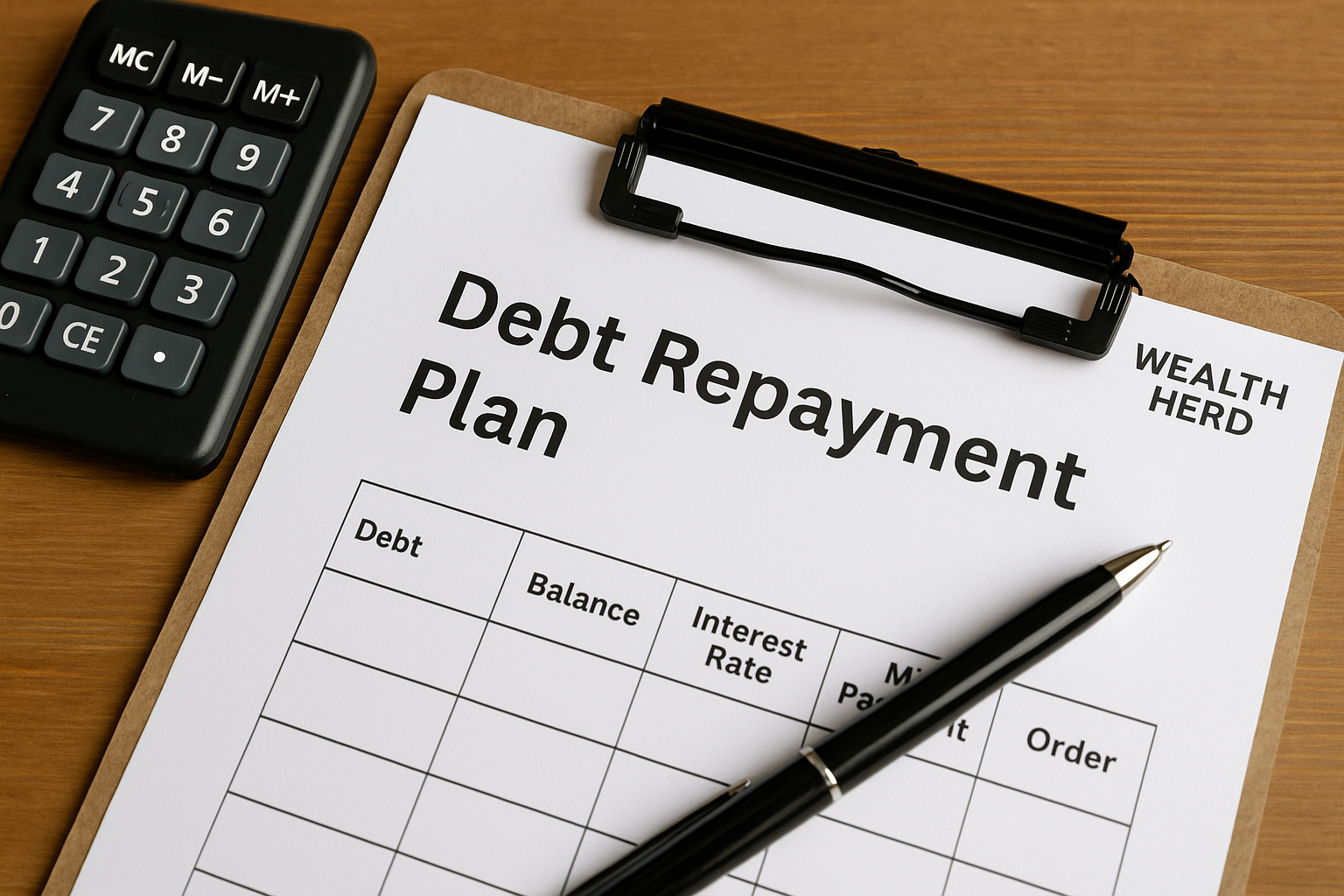💸 Struggling with Debt? Here’s What a Realistic Repayment Plan Looks Like
The Reality of Debt in the UK
Debt is a reality for millions. According to the latest figures from The Money Charity (2025):
The average UK household debt (excluding mortgages) stands at £15,900.
One in three adults in the UK reports feeling overwhelmed by their debts.
UK credit card debt alone is over £60 billion, and rising.
Over 8.3 million adults struggle to keep up with household bills and loan repayments.
These numbers aren’t just statistics, they represent stress, sleepless nights, and financial insecurity. But with the right mindset and a solid debt repayment plan, you can take back control.
Table of Contents

🧠 Mindset is Everything: Snowball vs Avalanche
A plan is only as strong as the mindset behind it. Debt repayment isn’t just about math—it’s about momentum, psychology, and consistency.
❄️ The Snowball Method (Best for Motivation)
How it works:
Pay off the smallest debt first, regardless of interest rate. As each debt is paid off, you “snowball” that payment into the next one.
Best for:
People who feel discouraged, overwhelmed, or struggle to stay motivated.
Example mindset:
“I need quick wins. If I see progress early, I’ll stick to the plan.”
Real-life example:
Emma, a 29-year-old teacher from Leeds, had five credit cards. By focusing on the smallest (£450), she got a psychological boost from knocking it out in one month. That momentum carried her through the rest.
Pros:
Fast emotional wins
Builds momentum
Simple to follow
Cons:
You may pay more interest over time
🔥 The Avalanche Method (Best for Efficiency)
How it works:
Pay off the debt with the highest interest rate first while making minimum payments on others.
Best for:
Mathematically-minded people who want to save the most on interest.
Example mindset:
“I want to be efficient. It’s more important to save money over the long term.”
Real-life example:
James, a software developer, owed £8,000 across multiple loans. He used a spreadsheet to sort by interest rate and paid off his 23.9% store card first—saving hundreds in interest over 18 months.
Pros:
Saves more money
Shortens overall repayment time
Cons:
Can take longer to feel like you’re making progress
Harder to stay motivated early on
Which Debt Repayment Method Is Right for You? (Quiz)
Take this 1-minute quiz to find out whether the Snowball or Avalanche method suits your personality and goals.
📊 Which Debt Repayment Method Suits You Best?
🤔 Should You Consolidate Your Debt?
💳 Your Debt Overview
| Name | Amount (£) | Interest Rate (%) |
|---|
💡 Extra Tips to Stay on Track
Automate payments – Reduce risk of missed payments.
Cut expenses – Identify subscriptions or luxuries you can pause.
Use windfalls wisely – Apply bonuses or refunds to your debt plan.
Share with a partner – Accountability helps you stay focused.
🔄 Common Mistakes to Avoid
Only making minimum payments
Ignoring interest rates
Not budgeting for emergencies
Taking on new debt before clearing old ones
📈 Visualise Your Journey
Seeing your progress matters. Whether it’s a spreadsheet graph or a printed debt tracker on your fridge, visual motivation is powerful.
Want more? In a future update, we’ll include:
Interactive web-based calculator
Graphing tools to track month-by-month progress
Mobile-friendly version of the template
🔚 Conclusion: Small Steps, Big Wins
Getting out of debt doesn’t happen overnight, but with clarity, consistency, and a good plan, it’s achievable. Use the method that fits your mindset, and don’t underestimate the power of momentum.





